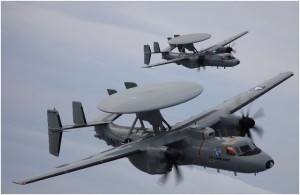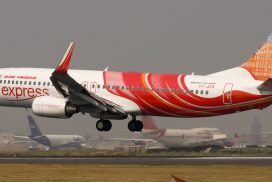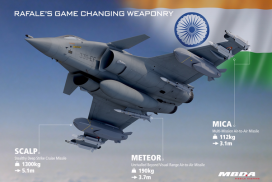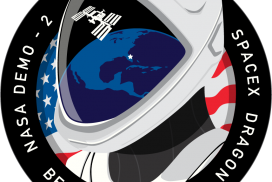 The Northrop Grumman Corporation is highlighting its industry-leading range of capabilities in intelligence, surveillance and reconnaissance (ISR) including airborne early warning and control systems for maritime reconnaissance, fire control radars and unmanned aerial vehicles, at the Aero India 2011 exhibition and air show. Aero India, organized by the Defence Exhibition Organization, Ministry of Defence and managed by the Confederation of Indian Industry (CII), takes place at Air Force Station Yelahanka, Bengaluru, India from Feb. 9-13, 2011. The Northrop Grumman exhibit is at stand number E12 in Hall E.
The Northrop Grumman Corporation is highlighting its industry-leading range of capabilities in intelligence, surveillance and reconnaissance (ISR) including airborne early warning and control systems for maritime reconnaissance, fire control radars and unmanned aerial vehicles, at the Aero India 2011 exhibition and air show. Aero India, organized by the Defence Exhibition Organization, Ministry of Defence and managed by the Confederation of Indian Industry (CII), takes place at Air Force Station Yelahanka, Bengaluru, India from Feb. 9-13, 2011. The Northrop Grumman exhibit is at stand number E12 in Hall E.
“ISR systems are critical to effective homeland security and our leadership in multiple-domain ISR strongly positions Northrop Grumman to help create solutions for India’s coordinated national defence structure,” said Bill Schaefer, vice president, business development, Northrop Grumman Aerospace Systems sector. “Developing our relationship with India and our presence is an important dimension of the company’s activities. We look forward to highlighting our range of products and capabilities and to supporting India’s defence modernization objectives.” The exhibit will showcase Northrop Grumman’s world leading capabilities in airborne early warning and control. Featured will be the E-2D Advanced Hawkeye and the Multi-role Electronically Scanned Array (MESA) radar.
Northrop Grumman’s airborne surveillance capability will also be highlighted with models of the Broad Area Maritime Surveillance Unmanned Aircraft System (BAMS UAS), the Long Endurance Multi-Intelligence Vehicle (LEMV) and Fire Scout, vertical unmanned aircraft system (VUAS) multi-role UAV on display. The MQ-4C BAMS UAS is based on a maritime derivative of the combat-proven RQ-4 Global Hawk unmanned aircraft with sensors and is a multi-mission maritime ISR system that will provide a continuous on-station presence while conducting open-ocean and littoral surveillance of targets. Construction of the first BAMS UAS aircraft began in September 2010.
The MQ-8B Fire Scout has been designed to accommodate a variety of sensor payloads and recently deployed for the first time aboard a ship with the U.S. Navy. An at-sea and land-based deployment is planned early this year. The Fire Scout has demonstrated capabilities to operate from the deck of underway ships, from remote fields, and in desert environments. Continuing its industry leading capabilities in unmanned systems, Northrop Grumman is developing up to three LEMV long endurance hybrid airship systems for the US Army. This system is designed to be optionally manned, providing the flexibility to operate with or without a crew on board, and sustain altitudes of 20,000 feet for a three-week period, to provide persistent ISR capability. Final testing of the first LEMV is planned for the end of 2011.
The MESA surveillance radar is an advanced airborne surveillance sensor and provides national protection, enabling sophisticated air-to-air and maritime coverage and integrated friend-or-foe identification. It is the first of its type with potential capabilities that have yet to be exploited. MESA provides beam-on-demand electronic scan flexibility, revisits in any direction at any time, extends range and special features and adjusts coverage to match threats. A scale model of the array will be available for viewing.
Northrop Grumman’s role on the P-8I Indian Navy Maritime Patrol aircraft programme includes early warning self-protection (EWSP) and electronic support measures (ESM) systems. The EWSP detects and defeats RF and infrared-guided missile threats and the ESM provides passive radar signals collection and location capability. The Embedded GPS/Inertial Navigation System (EGI) provides navigation data for the aircraft.



